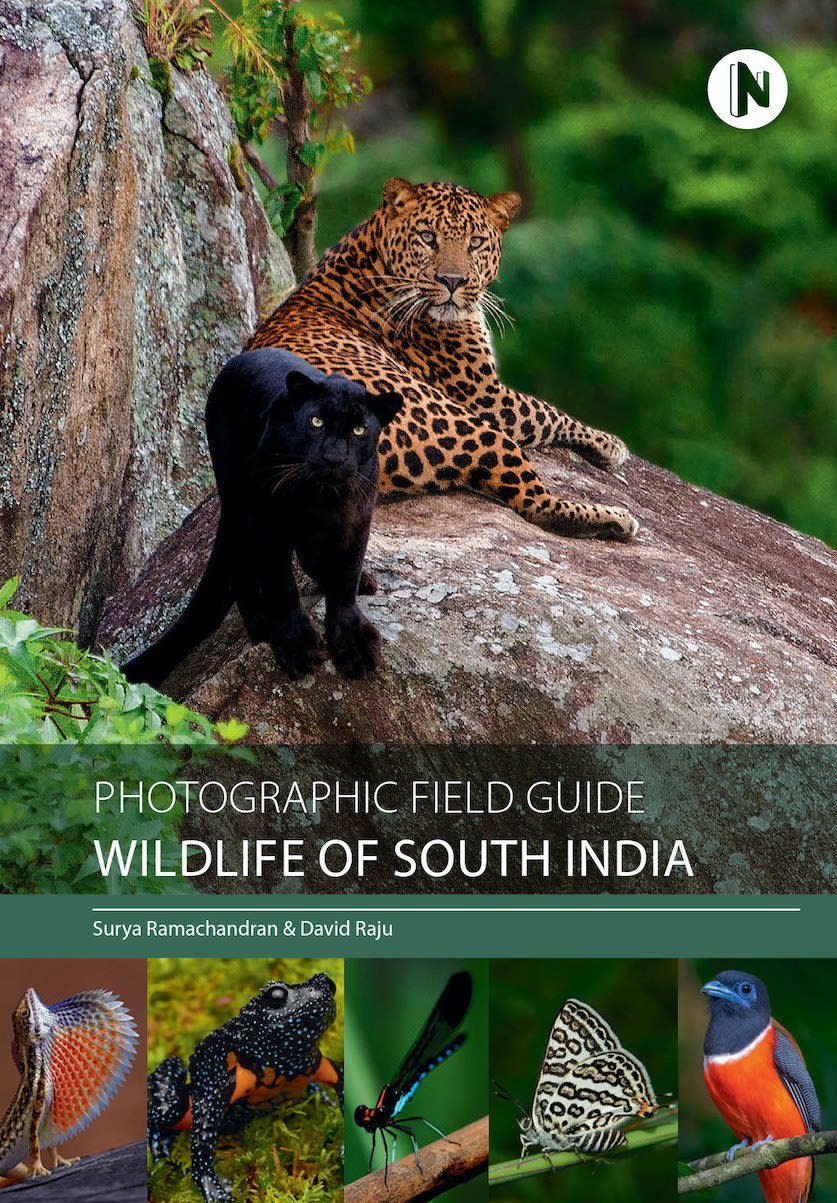 Listen to this article
•
15:34 min
Listen to this article
•
15:34 min
With a foreword written by herpetologist Romulus Whitaker, the Photographic Field Guide Wildlife of South India is a comprehensive field guide covering the mammals, birds, butterflies, dragonflies, reptiles and amphibians of the six states of south India. Designed by Mugdha Sethi and edited by Faiza Mookerjee, it covers 1,915 species using 1,800 photographs contributed by around 280 photographers.

Probably the most brightly-patterned frog of the region, it is found in pockets of ideal habitat throughout the southern Western Ghats. The actual distribution is yet to be confirmed. Moist forest patches, especially in the mid- and high-altitude evergreen forests, seem to be their preferred habitat. It is seldom seen as it hides under rotting logs and vegetation for most of the year and is active only for a short time. This unique frog lacks the vocal sack and tympanum, which are both vital tools for breeding frogs. The breeding behaviour of this species remains a mystery. Photo: David Raju


This group of skinks is endemic to the high montane sholas and grasslands of the Western Ghats. They get their name from the retractable claws on their digits. They have four digits on the forelimbs and five on the hindlimbs, an important distinguishing characteristic. They are iridescent blue or brown above (with or without small white spots); some show bright yellow-brown or red on the undersides (possibly during breeding), a stout long tail and a short snout. Photo: Surya Ramachandran

Found in the sholas, grasslands, secondary forests, rocky outcrops, stream sides and even semi-urban areas in the high hills of the Western Ghats- south of Palghat Gap namely the Cardamom Hills, Anaimalai Hills, Palni Hills, Meghamalai and Agasthyamalai Hills. The small size makes it hard to find them in the undergrowth and thick vegetation that they occupy. The activity levels go up during the monsoon rain, which is when they are seen in the open, usually near forest paths, streams and grassy clearings (often at night), lying still in one spot for long periods to ambush unsuspecting prey. The diet comprises mainly of amphibians, small mammals and reptiles and occasionally birds too. The venom in these snakes is poorly studied and the results of a bite by these snakes have variable outcomes in the victims. Photo: Surya Ramachandran


“As professional wilderness guides and naturalists, we understand the importance of simplifying and presenting complicated information in a beautiful concise manner. That is essentially what this book is all about – a powerful tool for anyone who wishes to explore and better understand the wild corners of the region. It has been three years since we started working on the book and in the end, all we want to do is get back out there and revisit all the wild spaces of South India that inspired us to make this book a reality.” – Surya Ramachandran
“The first connect we make with anything we come across, from people we come across to objects and wild denizens, is the process of naming it. This often leads to the building of curiosity, awareness and eventually conservation in some form. This book is an effort to ensure that the process of initial identification is made easy and plant the seeds of exploration and the need for preservation of our biodiversity.” – David Raju
Excerpted with permission from the Photographic Field Guide Wildlife of South India by Surya Ramachandran and David Raju, published by Notion Press, Price: Rs 1,500. For those within India who wish to buy the book supported by WWF India and Muthaiah Research foundation, visit: www.photofieldguides.com







